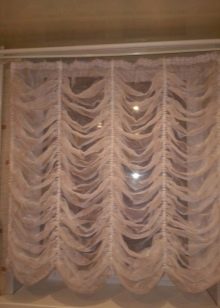Curtains in the hallway: what are they and how to choose?
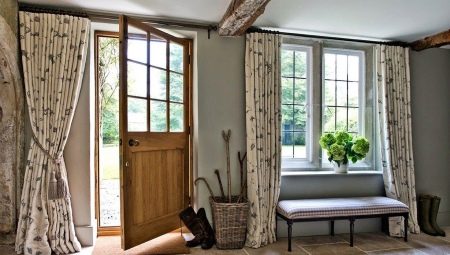
The first room that guests meet when entering an apartment or private house is the entrance hall. As a rule, it is here that the first impressions of the house and its owners are formed, and therefore it is very important to pay special attention to the design of the hallway. So, the use of curtains will be a good design technique. If there are windows in the hall, you need to approach the choice of curtains with great responsibility and heed the advice of designers.
Species overview
For use in the corridor, the following types of curtains are allowed.
Japanese. A common option that is great for use in the hallway. It fits well into a wide variety of designs. It gives free rein to the buyer's imagination when choosing textures and colors, but designers recommend giving preference to varieties that are raised above the floor to a height of 30-40 cm.
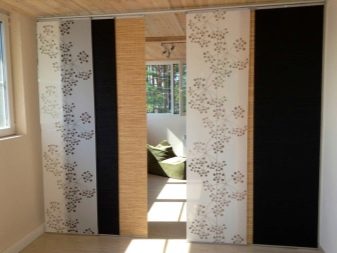
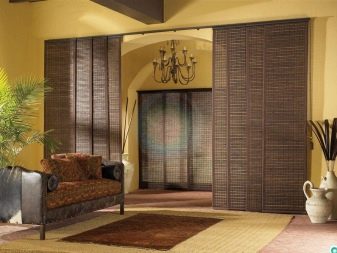
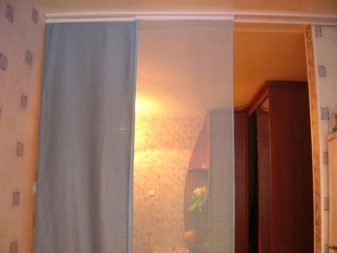

- French. They are curtains, in which folds are collected along the entire length. This option makes the entrance hall luxurious and solid, but can only be used in large large halls.

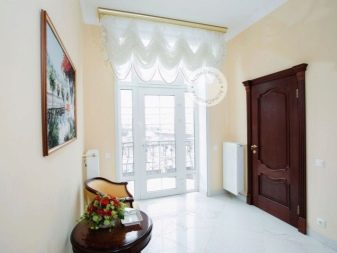
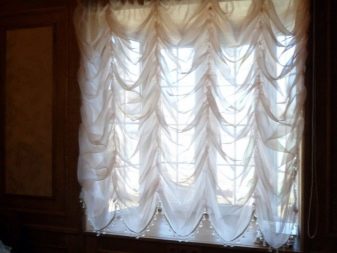
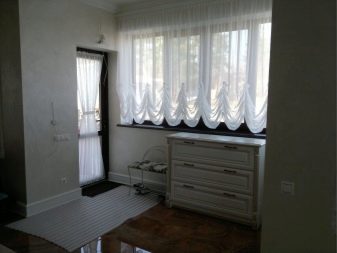
Roman. Sailing type of curtains, which are made from fabric. These curtains are moved upward by means of a special cable. These models are perfect for small or narrow windows. An acceptable option for those who have at least minimal sewing skills, since DIY sewing is allowed. In this case, the owner of the hallway will become the owner of exclusive curtains that will perfectly fit into the design of a particular house.
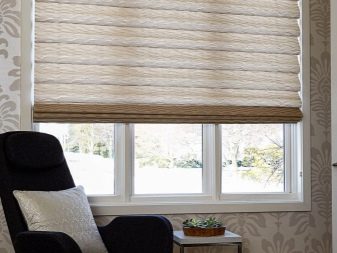
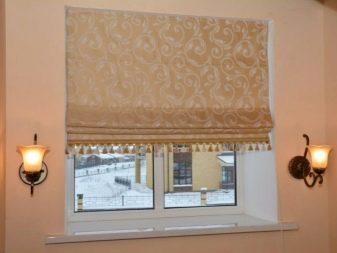
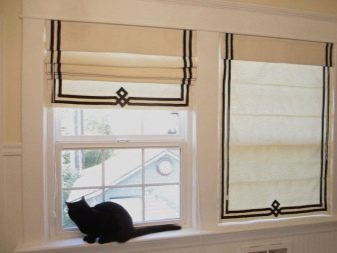

- Austrian. Another type of sailing curtains. These are short curtains that are commonly used in classic and modern styles.The variety differs from the Roman variety in that it is assembled from below with real folds. In fact, this is a short type of curtains that are familiar to us from the theater stage. They are made of shiny and dense materials. It is possible to purchase in parts: for example, for a small window opening it is recommended to choose a single canvas, and for several sashes it is better to buy curtains in parts.
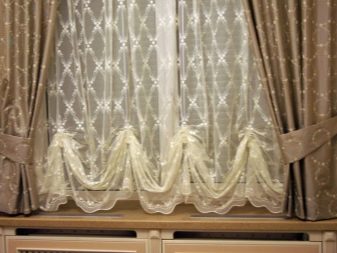

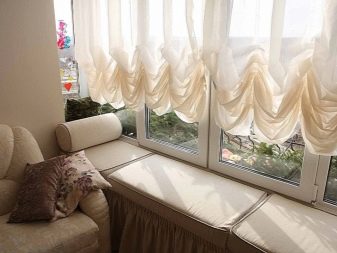
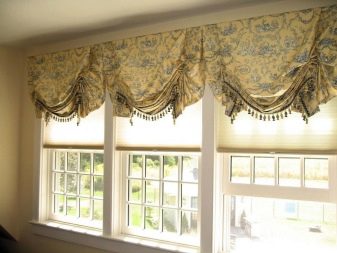
- Rolled. A very practical model with a fairly simple design. From above, the base is wound onto the cassette, and lowered manually or automatically. It is recommended to use automatic roll samples for modern style trends; by means of a special remote control, innovative models allow you to adjust the height. Despite the modernity, such curtains are inexpensive, since they are mainly made of good, but budgetary material - PVC. This raw material is perfectly suited for use in non-residential premises, such as a hallway. You can order varieties from natural materials, but they will cost a lot. Rolled products are suitable for windows located next to the front door. Their plus is that, in comparison with the classic long version, they do not absorb dust from the street, and if you need to open the door for a long time, the roller blinds can always be completely rolled up so that street dirt does not get on them.
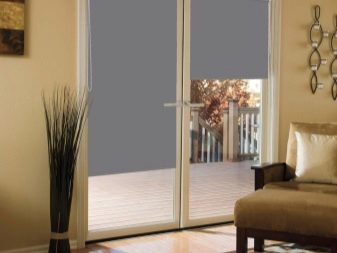
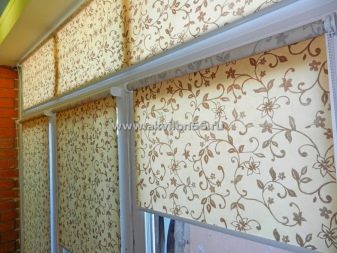
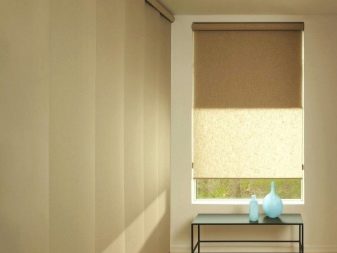
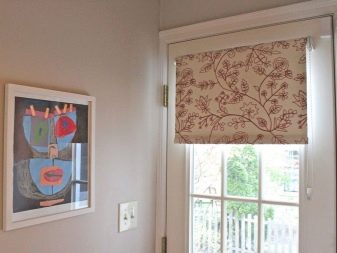
- Thread. These curtains are made of threads that are different from each other in width. A good option for a private house. This is a light variety that brings freshness, simplicity, and homeliness to the atmosphere. They are easy to wash, in addition, sunlight passes well through the threads into the hallway.
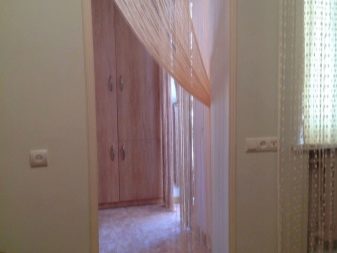
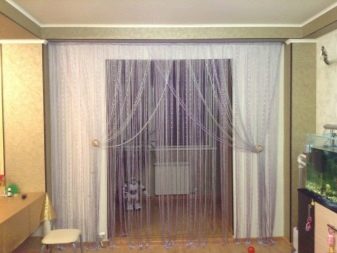
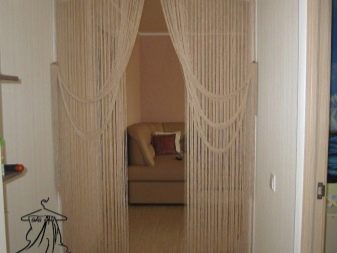
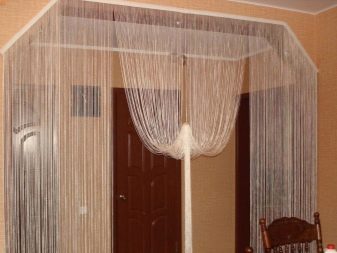
Materials (edit)
For the manufacture of various types of curtains, manufacturers can use a wide variety of raw materials. The most demanded materials are fabric, bamboo, and plastic. For the manufacture of functional parts and decorative little things, it is possible to use wood, glass, clay, metal.
Some types for the hallway can be made entirely from small parts, in which case they will be collected in a chain or threaded in a thread of a suitable density.
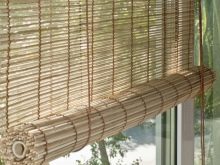
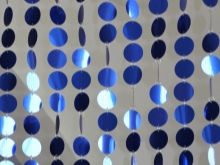
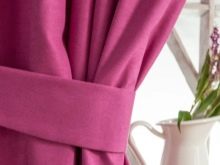
Nowadays, the most popular materials for the manufacture of curtains in the hallway are silk, organza, linen, bamboo. In order for the products to have the maximum service life, synthetic threads are added to the composition of the raw materials. Corridor curtains made of jacquard, chiffon, brocade, velvet also look very elegant. Jute, bamboo and rattan can be used to produce timber structures, often serving as a block of windows and doors.
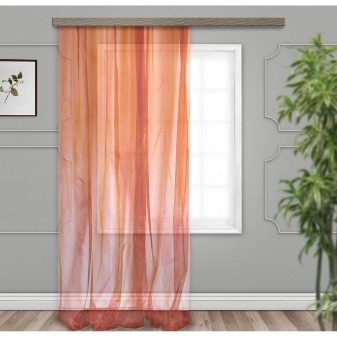

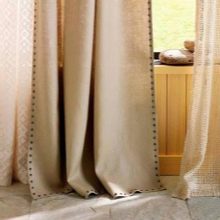

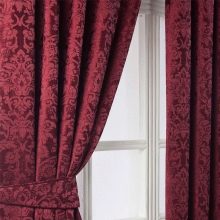
Dimensions (edit)
In order for the dimensions of the curtains to correspond to the parameters of the window in the hallway, it is important to correctly measure the opening. To measure the dimensions, a tape measure is used, it measures the length of the cornice, window, window sill, and the height from floor to ceiling. If rolled or Roman products are used in the corridor, then they are placed clearly in the window opening, which means that their width should be equal to the width of the window from glazing bead to glazing bead. Some owners prefer to hang roll copies over the window, and in this case their width is selected according to the formula "width of the window opening + 10-15 cm". Then the canvas will completely hide the window and go beyond a little in order to hide the household from the sun as much as possible.
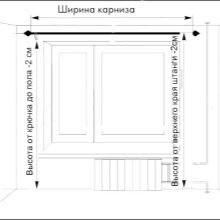

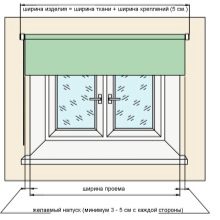
If blinds are used in the hallway, then they are also selected in accordance with the width of the window opening. In the case of using Japanese designs, which are many panels, it is allowed to go far beyond the borders of the window, or you can install them clearly along the width of the opening.
Thus, the size of the curtains for the hallway depends on the personal preferences of the owner, the size of the room and windows, the chosen style.
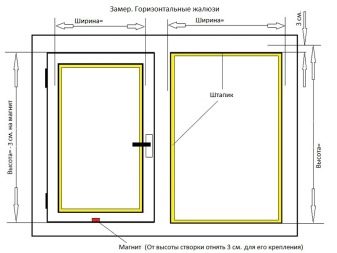

Styles
To choose curtains for the hallway in accordance with a certain style, heed the advice of designers.
If you need curtains for a classic-style corridor, then sew from an elite fabric of a rich color, velvet is usually recommended. Use lambrequins and brushes as additional decorations.
When buying curtains for the hallway in hi-tech, modern, minimalism, loft or avant-garde styles, give preference to concise models of simple cut. Any material can be used.
For modern styles, thread options are quite suitable, they can be offered under the name "muslin product". Light flowing threads allow not only to impart weightlessness to the room, but are also a functional item when zoning the hallway.
The same thread models made of an almost transparent material are perfect for use in a country or Provence style hallway.
For African and eco-styles, you can pick up specimens made of thin stems intertwined with each other.
The country hallway style is more often used in village houses. For this direction, curtains made from natural raw materials - linen or cotton are well suited. Drawstring models are a suitable alternative to a straight canvas.
Do not be afraid to use fringe on the curtains in the hallway - this exquisite design technique will perfectly fit into the interior of the hall, made in the styles of classic, east, high-tech, country.
If the design of the hallway is developed in a mixed style, then Japanese window panels are more suitable. These are versatile designs.
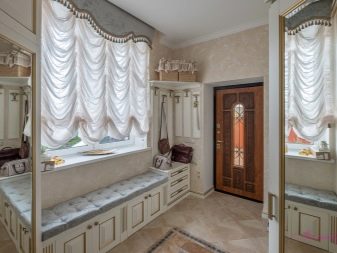
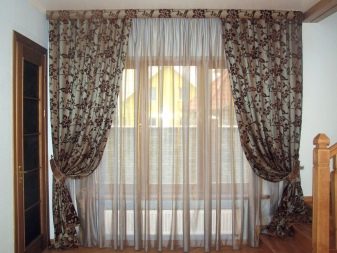
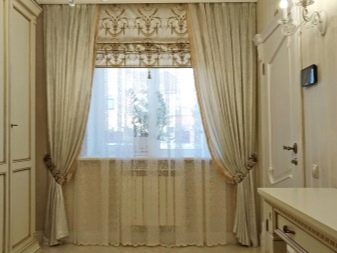

How to choose curtains?
When choosing curtains for the hallway follow a few guidelines.
For a narrow corridor, choose a light tulle. For a visual expansion of the space, options with a horizontal pattern are suitable.
If the hallway has low ceilings, then give preference to specimens with a vertical pattern - they will optically raise the room.
For a small corridor, choose simple cotton models - luxurious artsy options will look unprepossessing in a narrow space.
For a spacious hall, on the contrary, heavy massive curtains decorated with exquisite patterns are more suitable.
If the products are selected for a dark hallway, then give preference to light thread patterns that transmit light.
If the corridor, on the contrary, is too lit, then it is recommended to choose models with a lining that will protect the main fabric from fading.
Now it is becoming fashionable to decorate the hallway in laconic soft colors, so designers recommend buying curtains in white, gray, green, brown, blue shades.
Do not be afraid to experiment with the selection of curtains. For example, many people love interesting combinations of different options. So, curtains and blinds, Roman blinds and drapes, classic and roller blinds look unusual in the hall.

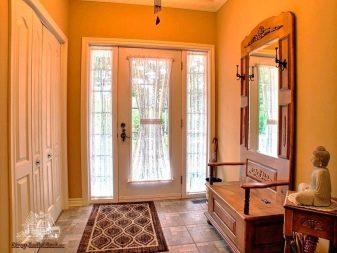
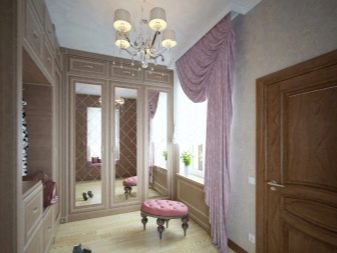
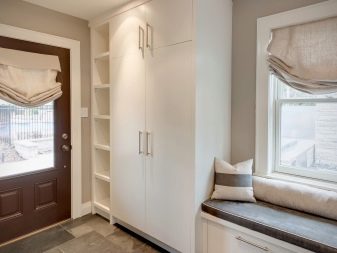
Beautiful examples
A bamboo roller blind is perfect for an eco-style interior. In this case, it hides the exit to the backyard.


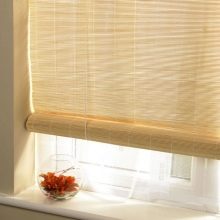
Heavyweight curtains made of thick red material with a golden tassel are a luxurious option for decorating a hallway in a classic style.
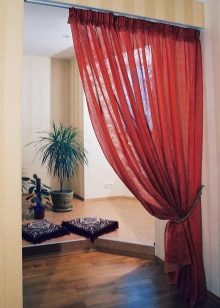
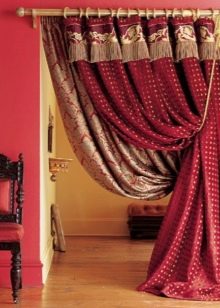
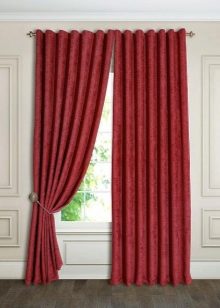
It clearly demonstrates how filament curtains can serve as a subject for hallway zoning.
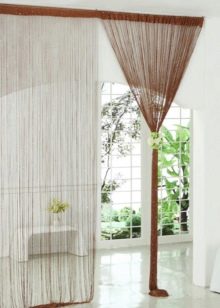
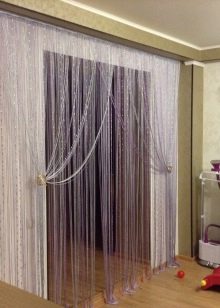
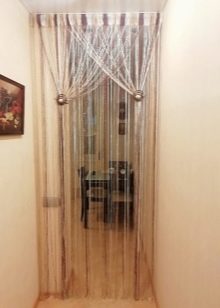
Roman blinds are the best option for a narrow opening. Horizontal folds visually expand the space, look stylish and modern.
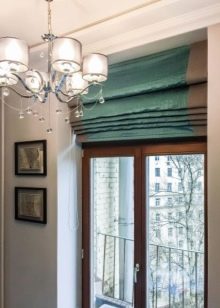
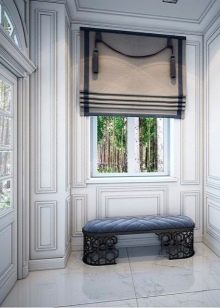

French curtains will emphasize the luxury and sophistication of the hall. The drapery made of light thin materials, for example, muslin, moire, tulle, satin, looks especially solemn.


